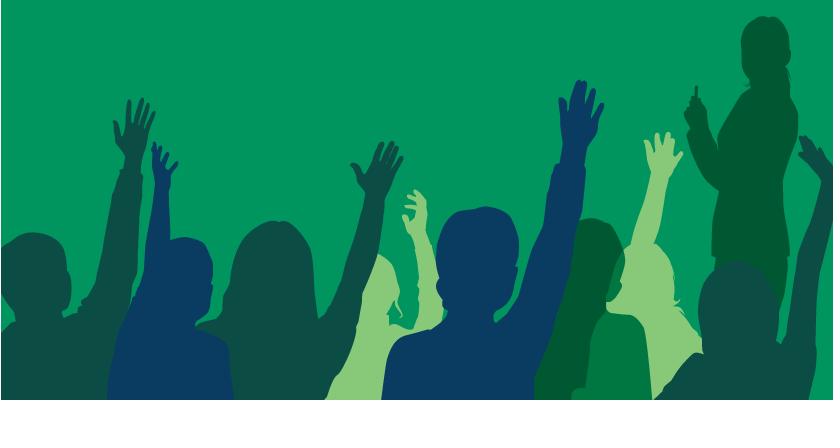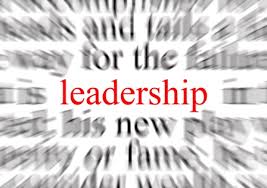Leading change can be quite a challenge, especially when you’re asking teachers to let go of materials and techniques they have used for most of their careers. Here’s how we approached this successfully in our district.
By Cristina Charney and Janeal Maxfield
As math instructional specialists for the North Thurston Public Schools in Washington State, we were tasked with helping elementary teachers adopt a new math program for teaching to the Common Core standards several years ago.
Initially, we thought this would be easy. Our district had chosen Stepping Stones from ORIGO Education to be our new program for core math instruction in grades K-5, because it had been written to address the new standards and does a good job of developing a deep conceptual understanding of math using powerful visual models and students’ natural language.
We assumed that teachers would be excited to use this new resource, because it covered all of the new math standards within a single, unified program. Teachers wouldn’t have to spend their time hunting for additional materials; instead, they could focus on planning how best to use their instructional time within one resource.
These assumptions were our first mistake.
Contrary to what we had anticipated, we encountered a brand of reluctance that, ultimately, had little to do with the quality of the program itself. Rather, we had underestimated how hard it is for people to embrace significant change.
As we tried to make sense of this phenomenon, we noticed a few patterns:
Our teachers who were new to the profession had perhaps the easiest transition. They had no prior schema for teaching math, and they seemed to appreciate the clarity and support that Stepping Stones provided.
Our veteran teachers fell into two categories. The easiest group to support were those who did not self-identify as “math” teachers. The ambiguity of the prior curriculum, which had been deconstructed and repurposed for every change in standards for the past 15 years, was stressful for them. Without interest and confidence in math or a deep conceptual understanding, they found that making the fragmented curriculum work for students was challenging. These teachers breathed a sigh of relief that now all of the materials they needed to teach math were in one place.
While both of these groups still needed support in learning how to navigate all the resources and structure their math learning time, adopting the program did not seem to be an issue for them.
The other group of veteran teachers posed more of a challenge for us. These were the teachers who already had developed an effective math instructional program—often at considerable personal time and effort. They took great pride in how well their students performed in math. We were asking them to abandon what they had done before and adopt this new, as yet unproven, program.
We gathered these teachers together by grade-level on a monthly basis, but by November of our first year, we were starting to sink. Emotions were so running so high that we would leave exhausted, and we couldn’t figure out what we were doing wrong. Then we discovered the book Switch: How to Change Things When Change is Hard by Chip and Dan Heath (2010). It became our playbook and helped us understand all the intricacies of how to lead people through change effectively.
Consequently, here are four key strategies we developed for how to get teachers on board.
Build clarity.
Uncertainty makes people anxious, and what seems like resistance often can be chalked up to a lack of clarity.
To build our teachers’ capacity to use these new instructional tools, we communicated about the materials constantly through frequent trainings and meetings. Aside from an initial six-hour training, we held monthly grade-level meetings, as well as building-wide meetings four times per year. In addition, a building-level math leader checked in with and supported new users at each school.
Adding to our challenge was that teachers were learning the new standards along with a new instructional program. We realized that much of the discomfort was with the standards themselves, so we spent a lot of our meeting time looking closely at the Common Core standards, what they called for, and how they were reflected within the Stepping Stones program.
Acknowledge teachers’ frustrations.
The Heath brothers use the metaphor of riding an elephant to describe change. When you’re moving along the path toward change, you have to account for the rider, the elephant, and the path itself. You have to direct the rider by appealing to teachers’ logic, motivate the elephant by appealing to teachers’ emotions, and shape the path by creating an environment for success.
We were directing the rider by making the connections between the standards and Stepping Stones explicit, and we were shaping the path with our meetings and support system. But we realized that we weren’t doing enough to address the third critical component of change: the emotional aspect. We didn’t understand that the elephant was getting unruly beneath us. For instance, veteran teachers who had identified with being “math teachers” and felt like they had their math instruction already well in hand displayed strong feelings about using a program that was not of their making.
When we started authentically listening to their concerns and acknowledging their frustrations, things began to turn around. We also tried to make the transition less daunting by having them concentrate on certain pieces at a time, such as just using the program for whole group instruction to begin with and then building from there.
Look for the bright spots.
The Heath brothers emphasize that one of the simplest things we can do to facilitate change is to ask people to find the bright spots: in other words, be explicit about what is going well. People are conditioned to focus on the negative and identify the problems, instead of focusing on what they are doing well. Teachers as a group can be particularly hard on themselves, because they care about their craft and they want to do it well. So, we were very intentional about finding the bright spots during the transition.
We would begin every meeting by acknowledging that change is hard, then discussing what aspects were going well. And it was amazing to see how the affect in the room would shift, because our teachers were doing well. More importantly, we asked what they saw their students doing in math that pleased and surprised them. As the success stories were shared, the buzz in the room warmed with smiles and joyous laughter.
As teachers talked about the successes they were seeing in their classrooms, support for the program grew. What’s more, our teachers were getting the chance to learn from their colleagues and hear good ideas that they could try out in their own classrooms. Making the time for this collegial sharing and collaboration was extremely important.
Rely on teacher leaders.
Ultimately, we gleaned a leadership team out of our teacher population. We gathered these teacher leaders about five times over the course of the school year, listened to their feedback, and provided all the tools to support a 90-minute professional learning opportunity with teachers in their building. The purpose was twofold: (1) We built leadership capacity in the district, and (2) teachers really appreciated the collaborative feel of learning from their peers within their own school building.
Our teacher leaders helped spread the initiative by working with their colleagues and elevating important aspects of the materials, thus promoting the buy-in that is essential in any move towards change.
Fortunately, we had the opportunity to roll out Stepping Stones several times at various grade levels, and we became confident that these elements of change were constant within a developmental process. We could not sidestep the discomfort, but we could become more metacognitive about it.
The IDEO Corporation, a company that uses the design thinking methodology to design products, services, and environments, uses a U-shaped model to describe what people go through when they approach any significant project that constitutes a change. At the beginning of the initiative, people feel hopeful. Then, as they start to encounter challenges, they become overwhelmed and often feel disheartened. Toward the end of the process, they begin to see the light at the end of the tunnel—and their confidence returns along with all the learning they have done. But you have to experience that dip before reaching the end.
We rolled out Stepping Stones in our 13 elementary schools over a three-year period. In the first year, we implemented the program in most of our K-2 classrooms. The next year, we adopted it within the rest of our K-2 classrooms and in third grade, and we started a small pilot project in fourth and fifth grade. In our third year, the rest of fourth and fifth grade began using the program.
After the first year, we’d had enough experience that were able to show teachers the U curve and tell them: “You might be feeling down right now, but we promise that by March you’re going to be coming out of it—and by June you’re going to be back at the top of the curve. This is how it goes, and it’s perfectly normal to be feeling as you are.” It was comforting for teachers to see that they were exactly where they were supposed to be—and by spring, they did feel more confident and excited for what the second year would bring for themselves and their students.
We just completed our fifth year of using the program, and we are looking at rolling out version 2.0 next year. Not only are our students more confident in math and have a deeper understanding of key math concepts, but our teachers are more confident as well.
Transitioning to a new instructional program successfully took a lot of time and attention that many districts don’t provide. We held a lot of intentionally-facilitated meetings; accepted people’s frustrations as normal; encouraged them to see what was going right; and gave them opportunities to talk to each other and share good ideas. The results speak for themselves, as enthusiasm for math is at an all-time high among our elementary students and teachers alike.
Cristina Charney and Janeal Maxfield are Elementary Instructional Specialists for the North Thurston Public Schools in Washington State.








